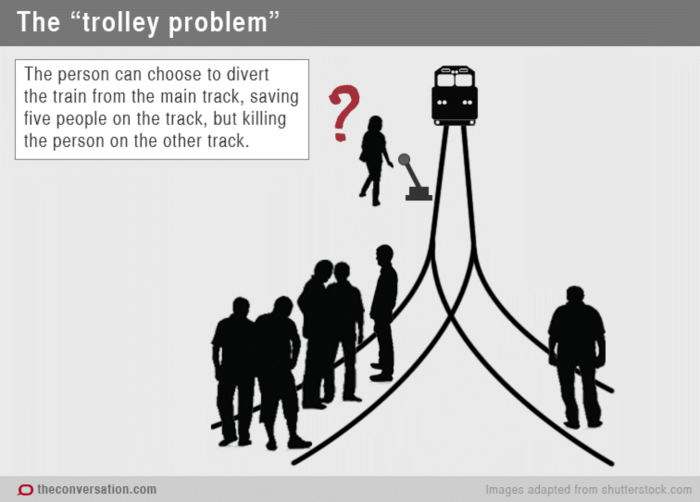Why does a dilemma make your decision-making more complex everfi? This intriguing question sets the stage for an exploration into the intricate nature of dilemmas and their profound impact on our decision-making processes. Dilemmas, often characterized by conflicting values and difficult choices, introduce a level of complexity that can challenge our cognitive and emotional capabilities.
As we navigate the complexities of dilemmas, we encounter a myriad of challenges. Weighing the potential consequences of different options, managing our emotions, and balancing personal values with external factors can be daunting tasks. Understanding the cognitive and emotional processes involved in facing a dilemma is crucial for making informed and ethical decisions.
Understanding the Nature of a Dilemma
![]()
A dilemma is a situation in which an individual faces two or more equally compelling choices, each with its own set of potential consequences. Dilemmas can be classified into three main types: moral, ethical, and practical.
Moral dilemmas involve conflicting principles or values, such as the choice between telling the truth and protecting someone’s feelings. Ethical dilemmas involve conflicting duties or obligations, such as the choice between following a company policy and reporting illegal activity. Practical dilemmas involve conflicting goals or desires, such as the choice between pursuing a career or raising a family.
Facing a dilemma can trigger a range of cognitive and emotional processes. Individuals may experience uncertainty, confusion, and anxiety as they weigh the potential consequences of different choices. They may also experience guilt, shame, or regret if they believe they have made the wrong decision.
The Impact of a Dilemma on Decision-Making: Why Does A Dilemma Make Your Decision-making More Complex Everfi

A dilemma can create significant uncertainty and confusion in the decision-making process. The conflicting nature of the choices makes it difficult to determine which option is the best or most ethical. This can lead to indecision and procrastination.
Individuals facing a dilemma may also experience difficulty weighing different options and values. They may be torn between their own personal beliefs and values and the expectations of others. This can make it challenging to make a decision that aligns with their true priorities.
Emotions and biases can also play a significant role in dilemma-based decision-making. Individuals may be influenced by their own emotions, such as fear, guilt, or anger, which can cloud their judgment. They may also be influenced by cognitive biases, such as the availability heuristic or the confirmation bias, which can lead them to make decisions based on limited information or biased reasoning.
Strategies for Navigating Dilemmas

There are a number of strategies that individuals can use to navigate dilemmas and make more informed decisions. These include:
- Identifying the key issues involved in the dilemma.
- Evaluating the potential consequences of different choices.
- Balancing personal values with external factors.
- Seeking advice from trusted sources.
- Making a decision that aligns with their true priorities.
Examples of Dilemmas and Their Complexities
Dilemmas can arise in a wide range of situations, from personal relationships to business decisions. Here are a few examples of dilemmas that illustrate the challenges of decision-making:
- The trolley problem: A runaway trolley is heading towards five people who are tied to the tracks. You are standing next to a lever that can divert the trolley onto another track, but there is one person tied to that track.
Do you pull the lever and save the five people, or let the trolley continue on its current path and kill the one person?
- The medical dilemma: A doctor is faced with a patient who has a life-threatening illness. The doctor knows that there is a new experimental treatment that has a 50% chance of saving the patient’s life, but also a 50% chance of killing them.
Should the doctor recommend the treatment to the patient?
- The business dilemma: A company is faced with a decision of whether to lay off 10% of its workforce in order to save money. The layoffs would have a significant impact on the employees who are laid off, but the company needs to make a profit in order to stay in business.
What should the company do?
The Role of Empathy and Perspective-Taking

Empathy and perspective-taking can play a crucial role in navigating dilemmas. By understanding the perspectives of others involved in the dilemma, individuals can gain a more comprehensive understanding of the situation and the potential consequences of different choices.
Perspective-taking can also help individuals to identify creative solutions to dilemmas that they may not have considered otherwise. By considering the perspectives of others, individuals can broaden their range of options and make decisions that are more inclusive and equitable.
However, it is important to note that empathy and perspective-taking should not be used to justify making decisions that violate personal values or ethical principles. Ultimately, individuals must make decisions that they believe are right, even if they are not popular or easy.
FAQ Insights
What is the key characteristic of a dilemma?
A dilemma presents a choice between two or more equally undesirable options, each with its own set of potential consequences.
How do dilemmas impact decision-making?
Dilemmas introduce uncertainty, challenge our values, and evoke strong emotions, making it difficult to weigh options and make clear-cut decisions.
What strategies can help us navigate dilemmas?
Effective strategies include identifying key issues, evaluating potential consequences, balancing personal values, and considering multiple perspectives.